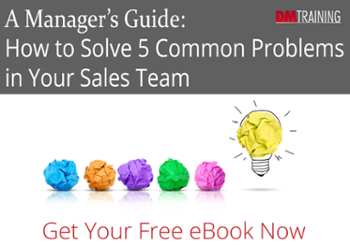Why the Need for Digital Sales Training Isn’t Going Away
Throughout the past few years, the need for digital sales training has only continued to grow. The most significant change we’ve observed after training salespeople from all across the media space is that all media sellers, now need to be on the bleeding edge of all digital developments in order to have a “typical” sales conversation with the “average” advertiser.
The biggest challenge in the digital space is the pace of change, which keeps accelerating. For salespeople to keep pace their training needs to be ongoing, with the content continuously refreshed—all while being measured against ROI benchmarks to ensure that the sales needle moves in the right direction.
I still meet salespeople who tell me how they were able to wing it in their first few years in the business. It might have been possible that some premium content sellers with limited offerings could still do that in 2010, but in 2016 everyone is selling and up against competitors selling every form of targeted, ROI+ digital advertising.
“The other guy” likely has more reach, more visitors, more measureable engagement, and possibly less expensive inventory—apart from every conceivable agency marketing service.
In this marketplace an untrained seller has no chance. And while every ad team has at least one “rocket scientist” (or at least a really smart Digital Sales Manager), learning from the smartest person on your team is never as effective as bringing in people that are specialized trainers.

Without training, the majority of media sellers this year will be at a 2013 level of understanding—and that’s only if they actually spend time training themselves.
We are training ourselves all the time. If you occasionally pick up a new insight into digital marketing, you get good at using that little bit of knowledge during sales conversations.
Over time, you’ll pick up more and get better at speaking with confidence, even if you barely understand what you’re saying. Since that happens to so many salespeople they are misled into thinking that they don’t need actual training.
Self-training isn’t going to give a seller a competitive advantage in 2016.
Every seller is trying to outsell their competitors using the same old “just winging-it” method. Only the seller who is better than their competition at aligning their offering with the advertiser’s goal while properly selling against their competition, over time, brings in more of the right deals at the right budget. The best trained sellers can convert a “test” budget into a long term relationship that equally benefits the advertiser, the publisher, and the salesperson.
Ongoing training is the key to having confident conversations. Last year’s vocabulary won’t cut it when you are having a conversation about attribution, safe environments, viewability, and engagement metrics. Even if a seller studied programmatic, video, and mobile 2 years ago, the space has changed so much that it’s like we’re starting all over again.
So what is the key benefit to ongoing training in a world that just never stops changing?
With ongoing practice, we improve our ability to learn. We speed up the process of learning new things, and start to be able to discuss new technologies, business models, and strategies. But to make that training work, it must be customized.
First, it must match the seller’s level of understanding and second, it must be applied to the specific sales situations that sellers find themselves in. When it comes to digital, most sellers are embarrassed about what they don’t know. As a result most organizations guess at the proper level for their staff and their training usually starts at a level that’s too advanced. Unfortunately, when the training misses that mark the affected salespeople tune out.
To make training situationally specific, role-plays based on actual upcoming meetings with real customers is essential. Otherwise sellers think they “get it” and don’t realize how poorly prepared they are until it’s too late and the sales opportunity is lost.
Let’s assume that the rate of change in the digital space will continue to accelerate and to keep up, the rate of sales training needs to keep pace. By employing purposeful and effective training, sellers can gain a competitive advantage that will keep them relevant.
About Steve Bookbinder
Steve Bookbinder is the CEO and sales expert at DMTraining. He has delivered more than 5,000 workshops and speeches to clients all over the world and has trained, coached, and managed more than 50,000 salespeople and managers. Steve continuously refreshes his training content to reflect his latest first-hand observations of salespeople across industries and regions. Through him, participants in his workshops and coaching sessions learn the best practices of today’s most successful sellers and managers across industries. Steve understands that sales is a competitive game. To outperform competitors and our own personal best results, we need to out-prospect, out-qualify, out-present and out-negotiate everyone else, not merely know how to sell. Through his specialty programs in Pipeline Management, Personal Marketing, Great First Meetings, 2nd-level Questioning, Sales Negotiating, and Sales Coaching, Steve trains sales teams to master the skills they need to overcome the challenges they face in today’s world… and keep improving results year over year.





